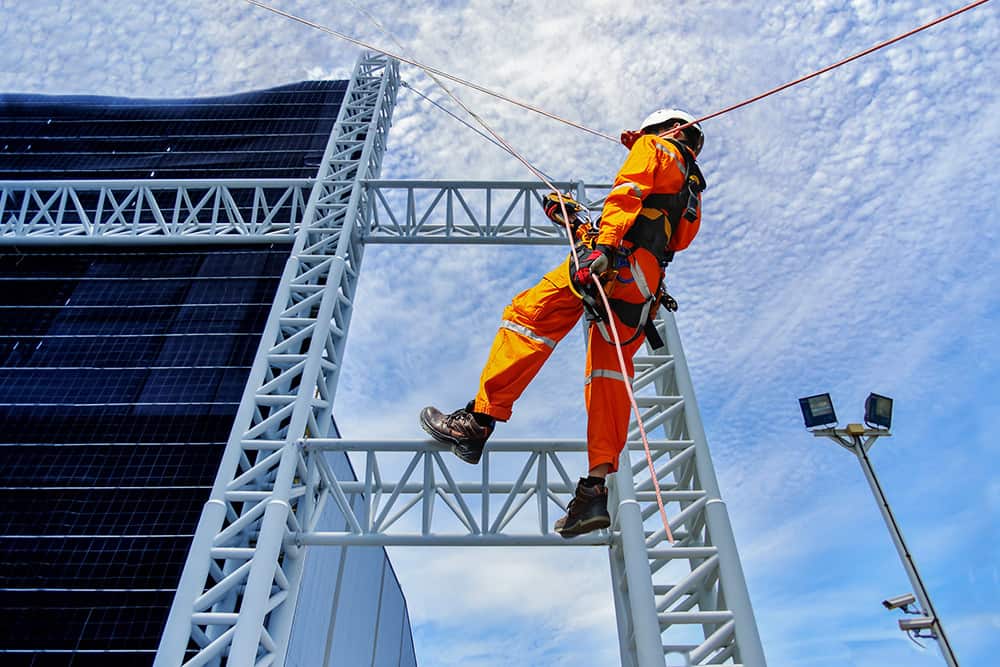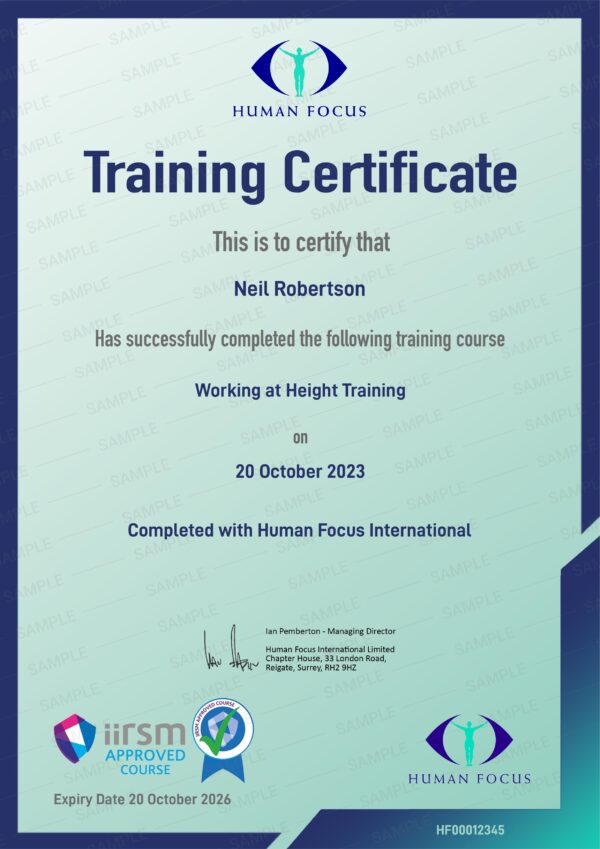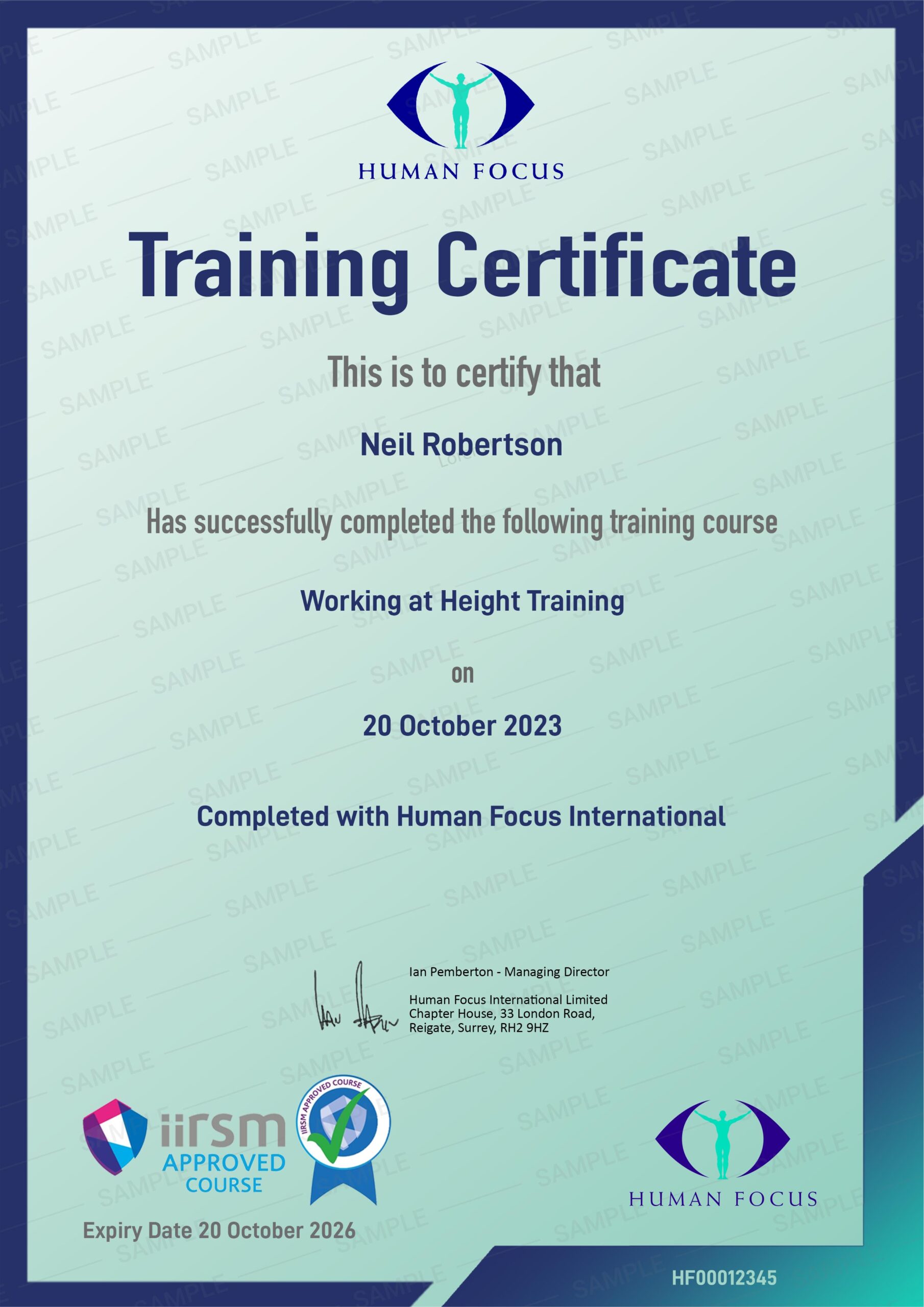Working at Height Training provides a clear, practical introduction to working safely when there is a risk of falling. It raises awareness of common hazards linked to ladders, scaffolds, and access platforms, and outlines key principles for planning and carrying out work at height without incident.
Why is Working At Height Training Important?
Falls from height are the leading cause of work-related fatal accidents, according to the Health and Safety Executive (HSE). Each year, an average of 35 workers are killed in falls, and around 4,900 are injured.
Given the potential harm, employers must ensure that work at height is properly planned, supervised, and carried out by competent people. Workers must also take reasonable care of themselves and others when carrying out tasks at height. They can only do this with sufficient experience, skills, and training.
These are legal duties enforced by the HSE to protect workers and members of the public from the significant risks of work at height.
Our work at height awareness training supports safety and helps employers and employees fulfil their legal duties. Trainees will understand the risks of working at heights and essential control measures used to prevent falls. This knowledge enables them to work more confidently, safely, and responsibly at heights.
Are You Aware of Your Responsibilities?
The Working at Height Regulations 2005 set out the duties employers have to ensure the safety of workers and the general public whenever work activities are at height.
These duties include:
- Avoiding work at height where possible
- Developing and implementing a policy for planning working at height activities
- Conducting a risk assessment for any work at height
- Providing the right equipment for safe work at height
- Providing workers with adequate information, instruction and training
- Establishing emergency procedures and communicating them to workers
- Ensuring all work at height is carried out by competent individuals
The HSE defines competence as the right combination of skills, knowledge, and experience. The necessary depth of these qualities scales with the risk level of the work.
Workers also have a duty to protect themselves and others when operating at height. They should be aware of safe working procedures and be able to recognise when conditions are hazardous, equipment is insufficient, or risks are unaccounted for. Our training course helps workers fulfil these duties.
Failure to comply with the Working at Height Regulations puts employees at significant risk and may result in serious consequences, including penalties, legal action or even imprisonment.
Falling from heights is one of the leading causes of workplace accidents. To minimise risks to a reasonably practicable level, it’s important to follow safety procedures and use proper equipment.
This Working at Height (WAH) Training course prepares workers to perform their tasks safely and responsibly at heights. It provides them with essential knowledge and skills to keep themselves and others safe when conducting work at heights, including planning, equipment selection, and safe work practices.
Who Needs This Course?
Working at Height Risk Assessment training is designed for frontline and supervisory staff who carry out or oversee tasks that involve working at height. It provides essential awareness of height-related risks, essential safety equipment and legal duties under the Work at Height Regulations 2005.
It is especially relevant for:
- Construction workers – who regularly carry out tasks on ladders, scaffolds, or unprotected roof areas.
- Maintenance staff – who use ladders, mobile platforms, or roof access points in facilities and plant areas.
- Warehouse personnel – who work from mezzanine floors, racking systems, or elevated picking stations.
- Utility workers – who access poles, street furniture, or elevated work areas in all weather conditions.
- Safety officers – who assess and monitor height-related work as part of site inspections or internal audits.
- Site managers and supervisors – who plan tasks at height, issue permits, and supervise the work.
Key Benefits
Falls are a leading cause of work‑related injuries and fatalities, making safe work at height a priority for employers. Under the Work at Height Regulations 2005, employers must ensure that workers understand the risks they face and how to manage them effectively. Providing training is essential for compliance and reduces the risk of accidents as well as enforcement action.
Here is how Working at Height Training can support your organisation:
- Fewer incidents: Trained workers are better equipped to recognise and manage the risks of working at height, helping to prevent serious incidents.
- Lower costs: Training helps prevent incidents that would otherwise lead to delays, compensation claims or lost productivity.
- Stronger compliance: Training certificates provide clear evidence that steps have been taken to protect workers and comply with the Work at Height Regulations.
- Improved reputation: Providing training demonstrates to clients, regulators and employees a clear commitment to safety and compliance.














